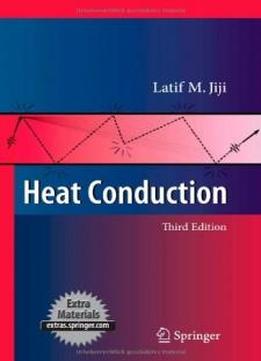
Heat Conduction
by Latif M. Jiji /
2009 / English / PDF
5.4 MB Download
This textbook presents the classical topics of conduction heat
transfer and extends the coverage to include chapters on
perturbation methods, heat transfer in living tissue, and
microscale conduction. This makes the book unique among the many
published textbook on conduction heat transfer. Other noteworthy
features of the book are: The material is organized to provide
students with the tools to model, analyze and solve a wide range of
engineering applications involving conduction heat transfer.
Mathematical techniques are presented in a clear and simplified
fashion to be used as instruments in obtaining solutions. The
simplicity of one-dimensional conduction is used to drill students
in the role of boundary conditions and to explore a variety of
physical conditions that are of practical interest. Examples are
carefully selected to illustrate the application of principles and
the construction of solutions. Students are trained to follow a
systematic problem solving methodology with emphasis on thought
process, logic, reasoning and verification. Solutions to all
examples and end-of-chapter problems follow an orderly problems
solving approach.
This textbook presents the classical topics of conduction heat
transfer and extends the coverage to include chapters on
perturbation methods, heat transfer in living tissue, and
microscale conduction. This makes the book unique among the many
published textbook on conduction heat transfer. Other noteworthy
features of the book are: The material is organized to provide
students with the tools to model, analyze and solve a wide range of
engineering applications involving conduction heat transfer.
Mathematical techniques are presented in a clear and simplified
fashion to be used as instruments in obtaining solutions. The
simplicity of one-dimensional conduction is used to drill students
in the role of boundary conditions and to explore a variety of
physical conditions that are of practical interest. Examples are
carefully selected to illustrate the application of principles and
the construction of solutions. Students are trained to follow a
systematic problem solving methodology with emphasis on thought
process, logic, reasoning and verification. Solutions to all
examples and end-of-chapter problems follow an orderly problems
solving approach.











